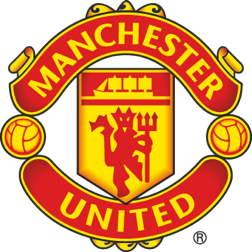How a dog saved Manchester United
On the night of 2 March 1901, exactly 120 years ago, something happened which changed the course of football history. A dog went missing in Manchester.
Allow us to explain by scrolling back a few more years to 1894 when Newton Heath - forerunners of Manchester United - were relegated to the Second Division.
After only two seasons in the top flight, the team's form began to plummet and there was an exodus of several key players. Despite new signings, Newton Heath repeatedly failed to earn promotion back to the First Division, and by 1900, the future looked bleak with bankruptcy on the horizon.
In an attempt to regain some financial stability, the club organised a fundraising bazaar at St. James’s Hall on Oxford Road in central Manchester, from 27 February to 2 March 1901.
The programme printed ahead of the fundraiser included the following call for financial support:
“There is a strong feeling that Newton Heath and District ought to have, and can support, a First Division club, and the co-operation is, therefore, earnestly requested of all who take an interest in the particular winter pastime, and who desire to attainment of this object.
"To fully achieve this, it is necessary that at least £1,000 should be forthcoming as the outcome of this bazaar, and the committee look forward to the realisation of, what they trust will prove to be, their well-based hopes.”
Unfortunately, the bazaar failed to raise the target of £1,000 - just under £80,000 in today’s money - that was needed to guarantee the survival of the team. Described by the press as a “…rank failure”, the fundraiser actually ended up costing more than it raised.
To add insult to injury, on the final night of the bazaar, the club’s mascot, a giant lemon and white-coloured St. Bernard dog called The Major, went missing.
The dog belonged to Newton Heath full-back and captain Harry Stafford and on matchdays, it would be seen at the ground with a collection box around its neck.
The dog’s disappearance started a chain of events that changed the course of our history, turning an underperforming Second Division team on a brink of bankruptcy into the First Division champions in a space of just seven years.
Having wandered the streets of Manchester, The Major turned up at a restaurant, where he caught the attention of a wealthy local brewer and businessman, John Henry Davies. Eager to buy the dog for his daughter, Davies tracked down Stafford through an advert in the Manchester Evening News.
The businessman's initial offer was rejected by the footballer, who refused to part with his beloved pet. However, with Newton Heath at severe risk of bankruptcy, Stafford eventually gave in and The Major became Davies’s dog, just in time for his daughter’s 12th birthday.
As a result, Davies became interested in the Heathens’ financial plight and together with four other investors, including Stafford, he rescued the club from bankruptcy and became its new chairman.
Club captain Harry was rewarded with a director's title, a rare honour for a player to hold such a position, and was given the responsibility for team affairs. By the summer of 1901, he was also a licensee at one of Davies's pubs, The Bridge Inn in Ancoats.
Most notably of all, following the upheaval, the Football Association agreed for the club to continue playing but under a new name – Manchester United.
The Reds were officially born and a place in football history was assured for a St Bernard's dog. Thank you, Major.




